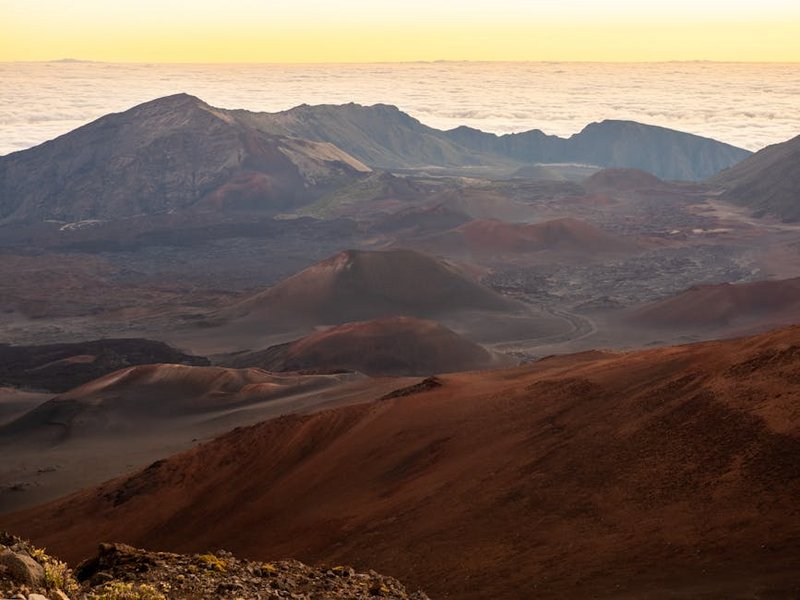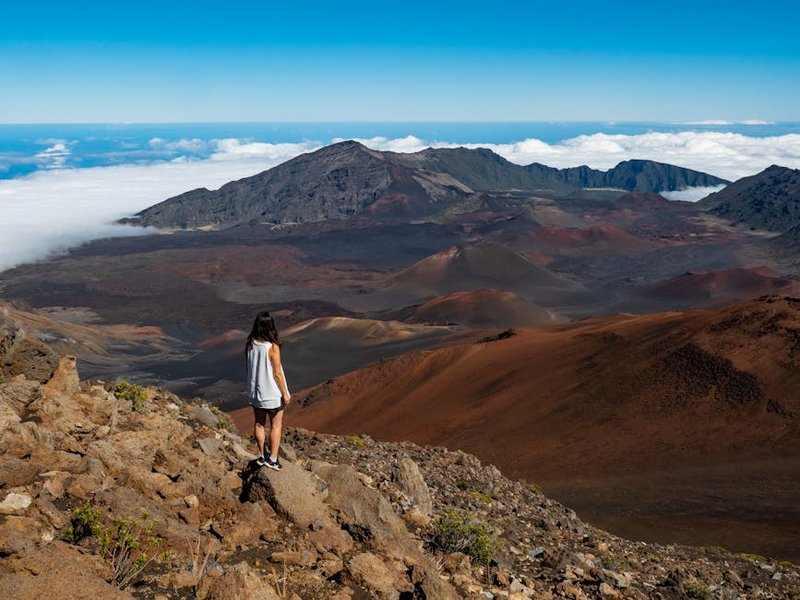Hawaii Big Island Volcanoes: Your Ultimate Adventure Guide
Exploring Hawaii Big Island volcanoes offers one of the most extraordinary adventures you can experience on Earth. The Big Island, officially named Hawaiʻi, is home to two of the world’s most active volcanoes—Kīlauea and Mauna Loa—both part of the magnificent Hawaiʻi Volcanoes National Park. Witnessing the raw power of volcanic activity, walking across recently cooled lava fields, and seeing the creation of new land right before your eyes creates memories that last a lifetime. The Hawaii Big Island volcanoes experience combines geological wonders with rich Hawaiian culture, breathtaking landscapes, and unique ecosystems found nowhere else on the planet. Whether you’re an adventure seeker, nature lover, or cultural enthusiast, these volcanic wonders offer something truly special that will deepen your appreciation for our dynamic planet.
Hawaii Big Island Volcanoes Essential Information
Before embarking on your volcanic adventure, understanding the basic facts about Hawaii Big Island volcanoes will significantly enhance your experience. The island formed through millions of years of volcanic activity from five separate shield volcanoes: Kohala, Mauna Kea, Hualālai, Mauna Loa, and Kīlauea. Kīlauea has been continuously erupting since 1983, making it one of the most active volcanoes globally, while Mauna Loa is the largest volcano on Earth by volume. The Hawaiʻi Volcanoes National Park encompasses 335,259 acres from sea level to the summit of Mauna Loa at 13,677 feet, protecting unique ecosystems and cultural sites. The volcanic activity constantly changes the landscape, with new lava flows adding land to the island’s southeastern coast regularly. The park offers various accessibility options, though some areas may require good physical condition due to elevation changes and rugged terrain.
Volcanic Activity and Safety – What You Need to Know
- Check daily eruption updates from the USGS Hawaiian Volcano Observatory before your visit as conditions change rapidly
- Always stay on marked trails and obey all warning signs—recent lava rock can be unstable and dangerous
- Carry N95 masks as volcanic smog (vog) containing sulfur dioxide can affect those with respiratory conditions
- Dress in layers as temperatures can vary dramatically from coastal areas to higher elevations
- Carry plenty of water—at least one gallon per person per day—as dehydration occurs quickly in volcanic environments
- Budget travelers can manage with $150-200 per day including camping fees, grocery meals, and park entry divided over multiple days
- Mid-range visitors should budget $300-400 daily for comfortable hotels, rental car, restaurant meals, and guided tours
- Luxury experiences range from $600-1000+ per day featuring premium resorts, private guides, helicopter tours, and fine dining
- National Park Service – Hawaiʻi Volcanoes National Park Official Site
- USGS Hawaiian Volcano Observatory Current Eruption Information
Park Entry and Timing Key Details
The Hawaiʻi Volcanoes National Park is open 24 hours daily, allowing for spectacular night viewing of volcanic glow. The entrance fee is $30 per vehicle, valid for seven days, with annual passes available for $55. The Kīlauea Visitor Center operates from 9:00 AM to 5:00 PM daily, offering maps, current conditions, and ranger-led programs. Early morning visits typically offer clearer views before clouds form, while evening visits provide the best opportunity to witness the orange glow of active lava. The park sees fewer visitors during weekdays and from September through November, offering a more peaceful experience. Remember that weather changes rapidly at higher elevations, so prepare for rain even on sunny days at lower elevations.

Hawaii Big Island Volcanoes Planning Your Trip
Proper planning transforms your Hawaii Big Island volcanoes visit from good to extraordinary. The island’s diverse microclimates mean you’ll experience everything from tropical rainforests to arid lava deserts within short distances. Most visitors base themselves in either Hilo on the east side or Kailua-Kona on the west side, with Hilo providing closer access to the volcanoes but Kona offering better weather typically. Rental cars are essential as public transportation to the park is limited, and you’ll want flexibility to explore different areas. Allow at least two full days to properly experience the volcanic wonders without rushing—this gives you time for both daytime hiking and nighttime lava viewing. Consider booking accommodations well in advance, especially during peak seasons, and remember that volcano tourism operates rain or shine, so come prepared with appropriate gear for various conditions.
Best Time to Visit Hawaii Big Island Volcanoes
The Hawaii Big Island volcanoes can be visited year-round, but specific seasons offer different advantages. April through October typically brings drier weather and calmer ocean conditions, ideal for combining volcano viewing with beach activities. November through March sees more rainfall but fewer crowds and lower accommodation rates, with the added bonus of whale watching season along the coasts. Volcanic activity varies independently of seasons, so check current eruption status rather than assuming seasonal patterns. Early morning visits (before 10 AM) provide the clearest views before clouds build up, while sunset and evening hours offer spectacular glow viewing opportunities. Avoid major holiday weekends when the park experiences significantly higher visitation, making parking challenging and trails more crowded.
Budget Planning and Costs
Essential Preparation Checklist
Preparing properly for your Hawaii Big Island volcanoes adventure ensures safety and maximizes enjoyment. Start with broken-in hiking boots with good ankle support—the rugged lava terrain demands proper footwear. Pack multiple layers including a waterproof jacket, as temperatures can drop significantly at higher elevations and rain showers occur frequently. Bring high-energy snacks, at least one gallon of water per person, and consider a hydration pack for longer hikes. Essential gear includes a headlamp or flashlight for lava viewing after dark, binoculars for distant observations, and a quality camera with extra batteries. Don’t forget sunscreen and sunglasses—the combination of high elevation and reflective lava creates intense UV exposure. Finally, download offline maps and eruption updates since cell service is unreliable within the park.
Hawaii Big Island Volcanoes Top Attractions and Activities
The Hawaii Big Island volcanoes offer an incredible array of attractions and activities that cater to all interests and fitness levels. From easy scenic drives to challenging backcountry hikes, the volcanic landscape provides endless exploration opportunities. The Crater Rim Drive takes you around Kīlauea Caldera with multiple overlooks offering stunning views into the active crater. The Thurston Lava Tube (Nāhuku) provides a walk through a massive cave formed by flowing lava, while the Devastation Trail showcases the powerful effects of recent eruptions on the landscape. For more adventurous visitors, the Kīlauea Iki Trail descends 400 feet into a crater that erupted spectacularly in 1959, crossing still-steaming vents and unique volcanic formations. The coastal area where lava meets the ocean creates constantly changing landscapes worth the longer drive if active flows are occurring.
Must-See Hawaii Big Island Volcanoes Highlights
No visit to Hawaii Big Island volcanoes is complete without experiencing these essential highlights. The Jaggar Museum overlook (currently closed but exterior viewing available) provides the most famous viewpoint into Halemaʻumaʻu Crater, particularly spectacular at night when the lava glow illuminates the volcanic gases. The Steam Vents along Crater Rim Trail demonstrate the incredible heat still present beneath the surface as groundwater turns to steam upon contacting hot rocks below. The Chain of Craters Road offers a 3,700-foot descent through multiple volcanic craters and lava flows, ending where lava crossed the road in 2003—a powerful reminder of nature’s force. The Puʻu Loa Petroglyphs feature over 23,000 ancient rock carvings created by Native Hawaiians, representing one of the largest concentrations of petroglyphs in Hawaii and offering cultural connection beyond the geological wonders.
Hidden Gems and Local Favorites
Beyond the main attractions, several lesser-known spots offer unique perspectives on the Hawaii Big Island volcanoes experience. The Kaʻū Desert Trail takes you through an area so affected by volcanic gases that almost nothing grows, creating an otherworldly landscape few visitors see. The Mauna Loa Road ascends to 6,662 feet elevation with panoramic views of the entire volcanic landscape, though check for closures as weather conditions frequently affect access. The coastal lava fields near where recent flows entered the ocean create black sand beaches and dramatic cliff formations that change with each eruption. Local guides often know the best vantage points for current lava viewing that may not be widely publicized. The park’s less-visited eastern section offers solitude and unique perspectives on the volcanic landscape, with opportunities to see how life gradually returns to lava-covered areas through pioneer plant species.
Hawaii Big Island Volcanoes Practical Travel Information
Navigating the Hawaii Big Island volcanoes requires understanding the unique logistics of visiting an active volcanic landscape. The island has two main airports—Kona International Airport (KOA) on the west side and Hilo International Airport (ITO) on the east side, with Hilo being significantly closer to the volcanoes (approximately 45 minutes versus 2.5 hours from Kona). Rental cars are essential as public transportation to the park is extremely limited, and you’ll need flexibility to move between viewing areas based on current volcanic activity. The park has limited services, so fill your gas tank and bring food and water before entering. Cell service is unreliable within the park boundaries, so download offline maps and eruption information beforehand. Accommodations range from camping within the park to luxury resorts along the Kona and Kohala coasts, with more moderate options available in Hilo and Volcano Village immediately adjacent to the park entrance.
| Accommodation Type | Features and Locations | Price Range (USD/Night) |
|---|---|---|
| Camping | Namakanipaio Campground and Kulanaokuaiki Campground within park | $15-25 |
| Budget Hotels | Hilo area hotels and Volcano Village inns | $120-180 |
| Mid-Range Resorts | Volcano House in park or Hilo area resorts | $250-400 |
| Luxury Properties | Kona and Kohala Coast resorts with volcano tours | $500-1000+ |


